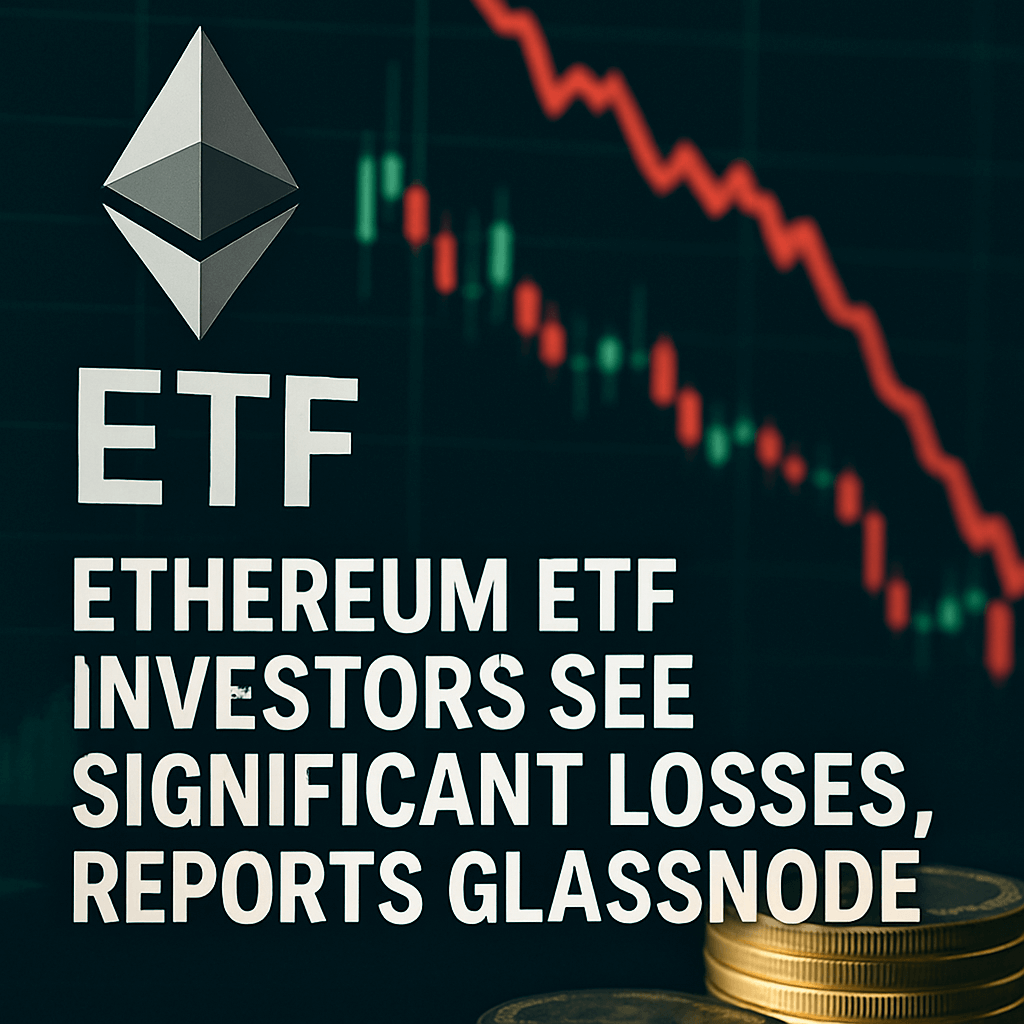Ethereum ETF Investors See Significant Losses, Reports Glassnode

On-Chain Data Highlights ETF Cost Basis
Glassnode’s on-chain analytics platform reports that the average spot Ethereum ETF investor is realizing an unrealized loss of approximately 21%. This figure is derived by comparing the aggregated acquisition cost of spot ETH held through ETFs with the current market price.
ETF Launch and Adoption Metrics
Since their US launch in May 2024, the iShares Ethereum ETF and the Fidelity Wise Origin Ethereum ETF have amassed combined assets under management (AUM) of around 1.5 billion USD. Initial inflows totaled roughly 150 000 ETH, representing a substantial transfer from spot venues to regulated products.
- Total ETF inflows: 150 000 ETH
- Combined AUM: 1.5 billion USD
- Average cost basis: 2800 USD per ETH
Creation and Redemption Mechanism
These ETFs employ an in kind creation and redemption process. Authorized participants assemble creation baskets of ETH in increments that correspond to a fixed number of ETF shares, typically 50 000 shares per basket. This process tends to keep the ETF share price closely aligned with the net asset value, with tracking errors under 0.1% so far.
Comparison with Futures-Based Products and ETHE Trust
Unlike futures based ETFs and the legacy Grayscale Ethereum Trust which traded at wide premiums or discounts, spot ETFs provide direct price exposure with reduced basis risk. The ETHE trust discount narrowed from 30% pre launch to under 5% post launch, as arbitrage flows normalized the share price.
Deeper Analysis
Staking Yields Versus ETF Fees
Ethereum staking on the consensus layer currently offers 4.5 to 5% annual yield. When juxtaposed with the ETF management fee of around 0.30% per annum, the net yield remains attractive for long term holders, albeit insufficient to offset a 21% unrealized loss in the short term.
On-Chain Holder Behavior
Long term holders with a holding period over one year have shown minimal profit-taking below 2500 USD, while short term speculators continue to rebalance positions during market rallies. This supply rotation affects the volume available to ETF creations and supports occasional premium spikes.
Regulatory Context and Outlook
The SEC approval of spot ETH ETFs follows the successful roll out of US Bitcoin spot ETFs in 2023. Regulatory clarity around custody, redemption policies and reporting standards has improved investor confidence. Upcoming milestones such as EIP-4844 data sharding upgrades could further influence network throughput and economic ratios.
Expert Commentary
The current cost basis disparity indicates that many investors are positioning for a medium term recovery, says John Smith, Senior Analyst at Crypto Fund Advisors. He adds that network fundamentals and EIP upgrades remain key drivers for price appreciation beyond ETF inflows.
Conclusion
Although the average spot Ethereum ETF investor is currently substantially underwater, the interplay of on-chain metrics, staking yields, and forthcoming protocol upgrades suggests a potential path to breakeven and beyond. Continued monitoring of AUM flows and network developments will be critical for strategic allocation.